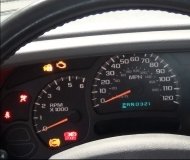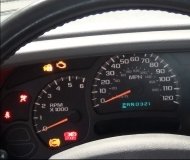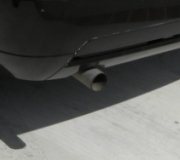You're at the right place. I can help with every sensor other than mass air flow sensors. Other experts will come to the rescue when necessary. The scanners display a sensor's signal voltage, but then they also show the value the computer interprets that to be. You don't have to guess, for example, if 3.5 volts is correct for the coolant temperature sensor. It will show right under that, "194 degrees F".
It takes too long to type all the information regarding sensors and scanners. A better solution is to find copies of Chrysler's training manuals. I always picked up a pile of extras when I went to their training classes. Also, my community college was one of three remote training sites they used around Wisconsin, and at the end of the week, they left us all their extra books. Their basic electrical class took two days. I can boil down all the important points very quickly. Besides training books, they offer a lot of diagnostic manuals that complement the service manuals, but are completely different. They are designed mostly for diagnosing fault codes with their DRB3. I never allowed my students to use those books because they are designed with technicians in mind who do not have a good understanding of electrical theory. My kids learned how a circuit worked, then they could figure out how to diagnose it without a book to guide them. Most of the charts in these books use truth tables, meaning it asks you to take a reading or observation, then answer, "yes" or "no", and follow the appropriate path to the next question. You don't need a chart like that when you know what voltage to expect at a point at what time.
Lets start tonight with the MAP sensor code 108. I described a while ago how they're built and how accurate they are. The original design's problem was caused by the protective jelly around the circuitry being eaten away by gasoline fumes. The biggest culprit was when an owner filled the gas tank on a really hot day, and squeezed and squeezed more fuel in after the pump had kicked off a number of times, and then they drove a few blocks and parked the car. You had to do every one of those things repeatedly to cause the problem. The cold gas from underground tanks would get hot and expand in the tank unless the car was driven a good 20 -50 miles. As it expanded, those fumes were collected in the charcoal canister, and overwhelmed it, then they made their way into the intake manifold and up to the MAP sensor where the protective jelly dissolved, then the fumes attacked the exposed circuitry. The redesigned sensor didn't seem to have that problem, and in fact, they are pretty reliable now.
The sensor is fed with 5.0 volts, and the ground return is shared with a number of other sensors. That circuit goes to ground through the Engine Computer so it can be monitored. For that reason, you will find 0.2 volts on the ground wire, not the 0.0 volts you might expect. The acceptable signal voltage range is 0.5 to 4.5 volts, but in actual practice, you'll typically find it to be around 1.2 to 4.2 volts. The exact values aren't important. What is important is if the ground wire is broken, or there's a problem in the sensor's circuitry, the signal voltage will go to 5.0 volts. That will trigger the fault code, "MAP voltage too high", which is what you have.
If the 5.0 volt feed wire is open, the signal voltage will be 0.2 volts. The tough one to understand is a break in the signal wire. If the wire is cut, the sensor will still work, and you'll find the correct voltage at the sensor's connector, but in the computer, that wire is interconnected to all kinds of circuitry, so what the computer sees can "float" to some random value. If that was a value within the acceptable range, the computer will accept it and try to run on it. It does also correlate the readings with other sensor readings and operating conditions, and it can set a different fault code referring to a disagreement. For example, it knows if it's firing the ignition coils at a rate of 5,000 rpm, and the throttle position sensor says it's at idle, those two things can't both be true. A MAP sensor can't say you're coasting when the throttle is wide open. Those set different kinds of fault codes where you have to figure out which one is wrong.
To prevent the signal voltage from floating to a random value when the signal wire is open, all of these circuits have an internal "pull-up" or "pull-down" resistor connected to them. Most common is the pull-up resistor. It is of such an extremely high resistance that under normal operation, it's like it isn't even there. It has no affect on the signal voltage. However, when that signal wire is cut, that pull-up resistor is tied to the internal 5.0 volt supply, so it puts 5.0 volts on the signal wire to force a defective condition to be detected, and a fault code to be set. Many people will just assume the sensor is bad, then they are stumped when the new one doesn't solve the problem. This would be found by first taking a couple of voltage readings before ordering the new part. You would find 5.0 volts on the scanner, and 5.0 volts at the terminal in the computer's connector, if you wanted to go through all that work of getting to it, but you'd find a correct voltage at the sensor. With two different readings at each end of the signal wire, you would know to suspect the wire, not the sensor.
A pull-down resistor is tied to ground, so a cut wire for that sensor would set the fault code, "voltage too low". You can determine how your circuit works by unplugging the sensor when the ignition switch is on, and measuring the voltage on the signal wire in the plug. Most often you'll find 5.0 volts.
When you first turn on the ignition switch, the MAP voltage represents barometric pressure. The computer puts that in memory, and updates it each ignition switch cycle. Years ago GM had a lot of trouble with them going out-of-range when you drove up or down a mountain. They couldn't handle the wide change in barometric pressure. All you had to do when the Check Engine light came on was to stop the engine, then restart it. The fault code would still be there, but the light would go off. Those codes on Chrysler products self-erase after 50 engine starts if they don't act up again.
As soon as the engine starts running, manifold vacuum goes up and that draws the MAP signal voltage down. I'd expect to see around 1.5 volts. Under load or heavy acceleration when the throttle blade is open, vacuum goes away, and MAP voltage goes up to perhaps 3.5 to maybe 4.0 volts. During coasting, vacuum is higher than normal, and MAP voltage is lower than normal. That is one of the parameter the computer is looking for to memorize minimum throttle.
There are some variations to be aware of with other car brands. Everyone else other than Chrysler uses a mass air flow sensor as the major contributor for fuel metering calculations. They usually still have a MAP sensor, but it is only used to read barometric pressure, and that continuously updates as you drive. Many GM models, and I'm sure many other brands, will use their MAP sensors as a back-up strategy for fuel metering when a defect is detected with their mass air flow circuits. Most of those engines will run quite well on the MAP sensor.
Chrysler uses a different method which is also common to other sensors on other car brands. This is what you might be running into with yours. When the computer detects a problem with the MAP circuit or the signal voltages it is receiving, it knows it can't trust those values, but it wants to keep running the engine. It can disregard the suspect signal voltage, and "inject" an approximate value to run on. Lets say the 5.0 volt feed terminal is spread in the connector and not making good contact. The computer will see 0.2 volts and set a fault code, but it knows the engine is running, and how fast, by the injectors and ignition coils it is firing. It sees the signal pulses coming from the cam and crank sensors. It knows road speed as it gets that data from the Transmission Computer and its speed sensors. It knows throttle position, so based on all of those things, it knows that MAP voltage should be very close to, ... Oh, ...2.784 volts. That is the value it will inject to use for that part of the fuel calculations. It won't be perfect, but it can be so good that people ignore the Check Engine light and keep on driving.
Here's what can happen though. You have a sensor that is just starting to fail, or there's condensed gas in the vacuum hose, or there's a large vacuum leak that causes manifold vacuum to drop. Any of those will result in the sensor developing the wrong signal voltage, but it is still within the acceptable range. The computer will accept them and run on them, but the engine will run poorly. Now you come along and unplug the MAP sensor. The computer will immediately detect that, set the fault code, turn on the Check Engine light since the code refers to something that could adversely affect emissions, and it injects the value it expected to see. With that injected value, the engine runs well, or at least better. We read this very often where someone says the engine runs worse when they plug in a new sensor.
There's two clinkers to this story you should be aware of to avoid arguments with your friends. The first one refers to some Nissan engines from the '90s, and possibly some others. Some of those engines used a MAP sensor that developed a low voltage for low vacuum / engine not running, and it went higher as vacuum went higher. With most sensors, it was the opposite. Voltage starts out high and goes down as vacuum goes up. Nissan had models that used one style or the other, and they both looked the same, mounted the same, and used the same plugs. If you had a used sensor on the shelf that you used for testing, you could put the wrong one in. I don't remember what the symptoms were, but this was found by a fellow who owns a shop that specializes in solving the one in a hundred cars that no one else can figure out. He is in Joliet, IL. He develops classes around these elusive problems, and came to our school once a month for the independent mechanics in my town. I got to sit in on those classes. Most of his customers are other shops, and he charges the same flat fee for every car, regardless how long it takes.
The second problem is more frustrating because it happens without any mistake on the mechanic's part. To my knowledge this only applies to GM vehicles in the '90s. Their dealer-level scanner was the Tech2. I don't know if this applies to other brands. The problem was when the Engine Computer knew there was a problem with a sensor and it injected a value to run on, it was that injected value that showed up on the scanner's display. For example, if you unplug the throttle position sensor, the pull-up resistor would take the signal voltage to 5.0 volts. That is what you would measure at the TPS connector, at the computer's connector, and it is what you should see on the scanner. However, the computer injected, lets say, .822 volts at idle, which is a value you could expect to see. How is it you have a perfect signal voltage, yet you have a recurring fault code for "TPS voltage too high"?
I suspect that was a software oversight in the Engine Computer, because the scanner is just displaying the data it was sent by the computer. The only fix for that was to be aware of it and share that with as many people as possible.
Remember when I mentioned how sensitive these MAP sensors are? There is another fault code that can be set for "pneumatic failure". There were some K-cars in the '80s that had the sensor mounted on the right strut tower, and a real long vacuum hose going to it. Gas fumes would condense and pool in a low spot where that hose drooped. The sensor itself still worked, but the liquid partially-blocked, and dampened the pulses of vacuum. Even though the signal voltage changed rapidly, like it was supposed to, the computer set this code because it wasn't seeing those tiny pulses. If those were missing, what else might be wrong, so it set the code, "pneumatic failure".
Another common one is "no change in MAP from "start" to "run". This was the typical code for those early failed sensors. The gas fumes destroyed the rubber diaphragm that tugged on the piezoelectric crystal. That crystal was at rest, like normal, when the ignition switch was turned on, so it sent out the correct signal voltage, but once the engine started and vacuum was developed, there was no diaphragm to pull on the crystal, so no change took place in signal voltage.
Now you know as much as I do about MAP sensors. Many of the others work on similar principles with the same range of signal voltages. Temperature sensor circuits are considerably simpler, but they need a slightly different description. Let me know when you need that great and wondrous information.
Monday, December 10th, 2018 AT 5:46 PM






